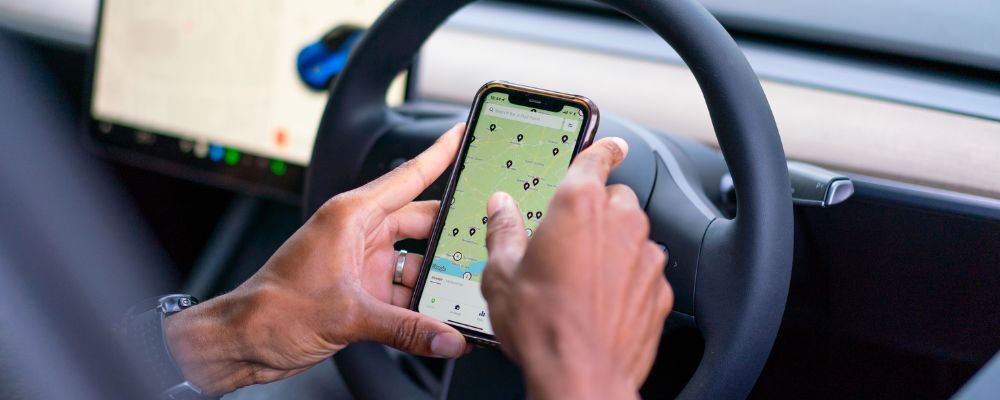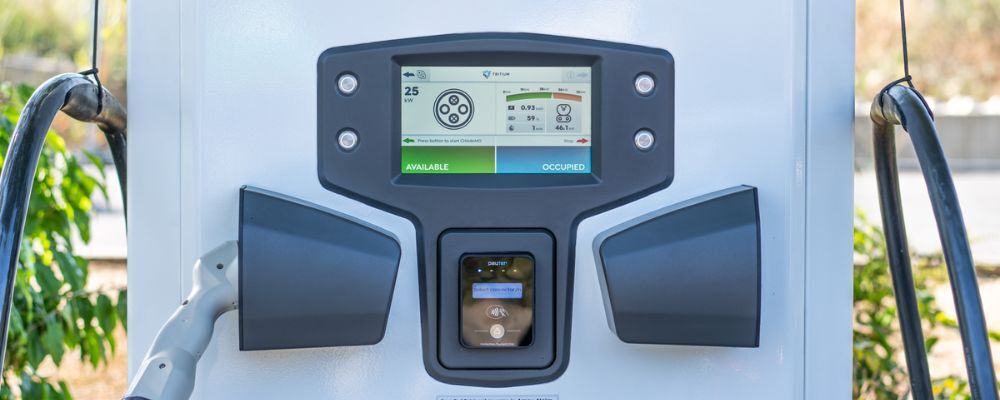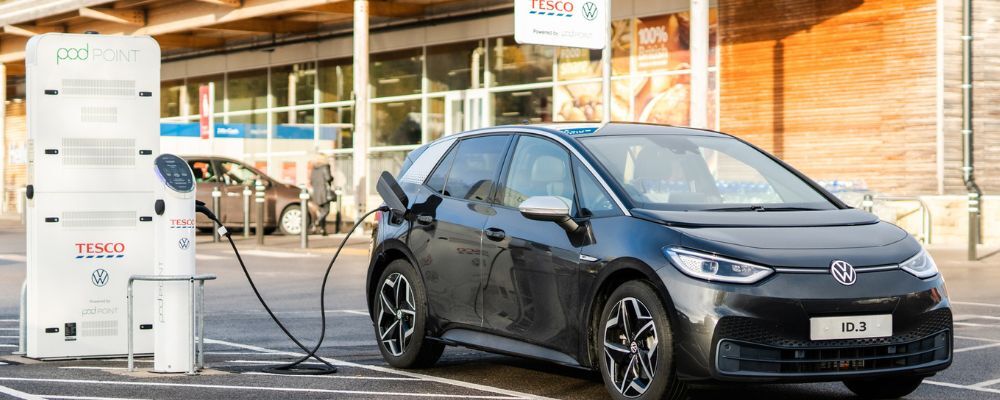
Help! I’m terrified of public charging. What do I need to know?
Posted by David: Aug 17, 2023 • 4 min read
If you find the idea of charging your EV in public daunting, we’re here to help.
There’s so much jargon thrown around in the electric vehicle (EV) industry, it’s no wonder drivers find the prospect of charging in public overwhelming.
Nobody has the time (or patience) to read novel-length articles explaining it all, which is why we’re cutting through the chaff to make it as simple as possible. So if you’re dreading the idea of trying to charge your electric car in public, trust us: it’s really, really easy once you get your head around it!
Here’s what you really need to know:
Finding chargers is easy
Our public network is one of the largest in the UK (9,200+ charging bays and counting as of 30th June 2023), so you don’t have to spend hours driving around looking for a charger.
Instead, simply download the Pod Point App and you’ll be able to find any public charger on our network, including its exact location, whether it’s currently available or in use, and how much it costs to use.
You’ll also need it to use the chargers and pay for a charge, but don’t worry - it’s free to download!

Using chargers is easy
You only need two things to use our public chargers: our app, and a charging cable. Rapid chargers (which we’ll explain in a bit) have charging cables attached for you to use, but you’ll need to provide your own cable for any of our non-rapid chargers.
Then, it’s simply a matter of parking by the charger, plugging in, and following any in-app or on-screen instructions. Most payments for our network go through the app, so all you need to do to stop charging is unplug the cable and drive off. That’s all there is to it!
There are different charging speeds
Unlike petrol pumps, different chargers have different charging speeds. It can be hard to know which speed to pick, and you may have seen words to describe different speeds like “fast” and “rapid”, or “Level 1, 2 or 3”, but here’s all you really need to know:

7kW is fine if you will be at your destination for a long time or just need a small top up
7kW public chargers are great for drivers whose batteries have plenty of charge and don’t desperately need the extra miles, but instead just want a little top up whilst they do a small shop, have a quick workout at the gym, or a nice meal at a restaurant.
Alternatively, they’re ideal if you know you’re going to be at that destination for a long period of time - say, 4+ hours, like a theme park or National Trust property - where you’re not in a rush to recharge quickly. Slow and steady wins the race, after all!
Incidentally, the EV industry calls 7kW chargers “fast”, but this is a bit misleading. 7kW is the standard speed for most home chargers because it’s enough to charge a typical EV battery from 0% to 100% over 8 hours (i.e. overnight).
Plus, fast includes 22kW which is 3x higher, so it doesn’t really make much sense. Anyway…

If you need extra miles fairly quickly, go for a rapid (43-50kW)
Rapid chargers cost more per kWh than fast chargers, but the benefit of them is you can recharge a lot faster.
A rapid charger will add roughly 100 miles of range in about 35 minutes. So if your battery is running a bit low and you need to pop to the supermarket for about 20 mins, you could plug into a 50kW charger and get around 50 miles of range in that time. That should be more than enough to get you to your next destination.
Equally, if you’re on a long distance journey, you could spend a break (say, an hour) at a big motorway service station and get ~200 miles of range. That’s more than 50% for most modern EVs!
Rapid chargers are often found at motorway service stations, but you can find them elsewhere like Lidl stores.
Ultra-rapids exist, but…
You won’t find many of them, and certainly not beyond motorway stations. Ultra rapids start at 100kW and (currently) go as high as 350kW, making them great for people who need a very quick getaway.
However, some older EV models can’t charge this quickly, and they cost even more than 50kW rapids. So you could end up paying more for your charge without the benefit the ultra-rapid brings.
And that’s it, really
There’s a lot of confusing jargon and terminology that confuses both new and veteran EV drivers alike and makes the idea of public charging seem impossible.
In reality, charging an electric car isn’t drastically different to fuelling a petrol or diesel car. The only real differences are that sometimes you need your own charging cable, and you can charge virtually anywhere you park.
The former isn’t a problem, and we think the latter is one of the best things about driving an EV!
To stay up to date with the latest news, follow us on Facebook, Twitter, LinkedIn and Instagram.
